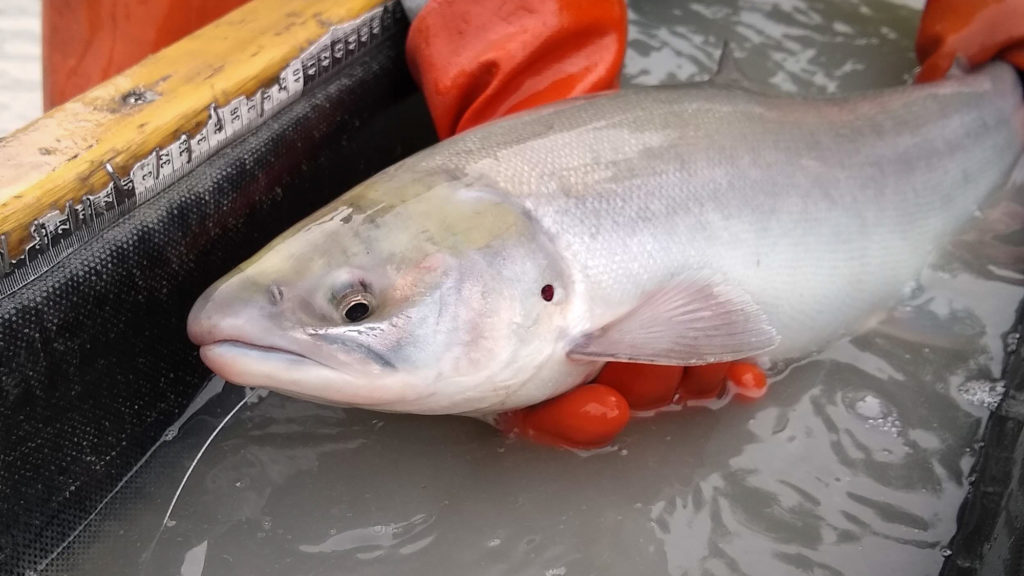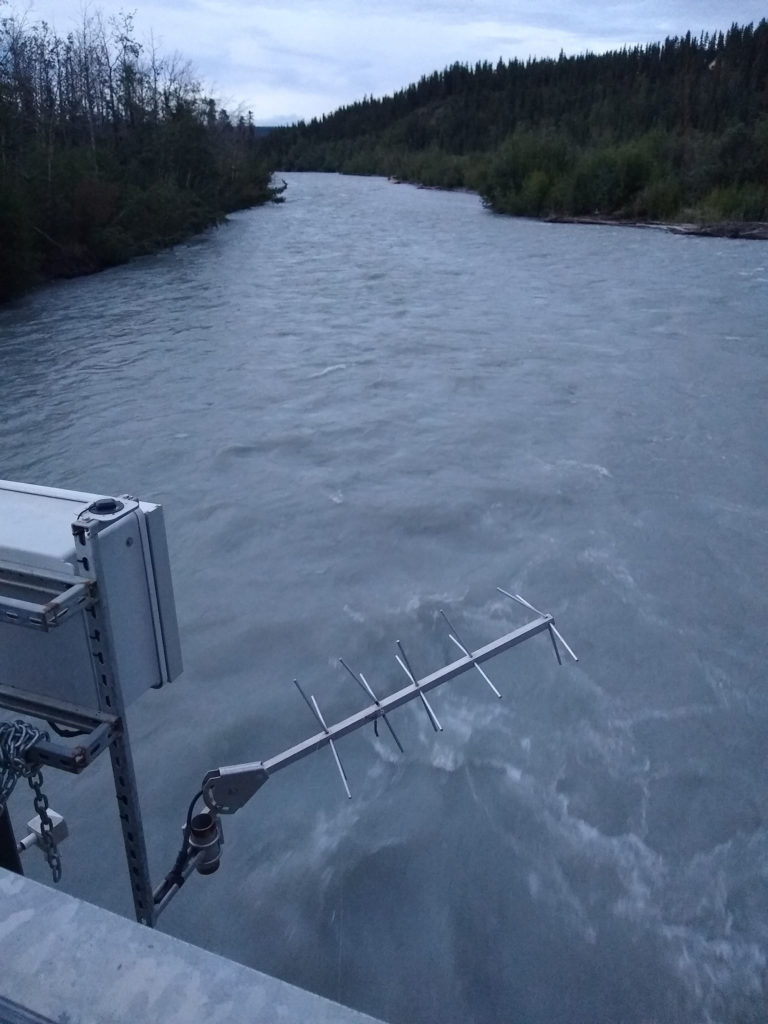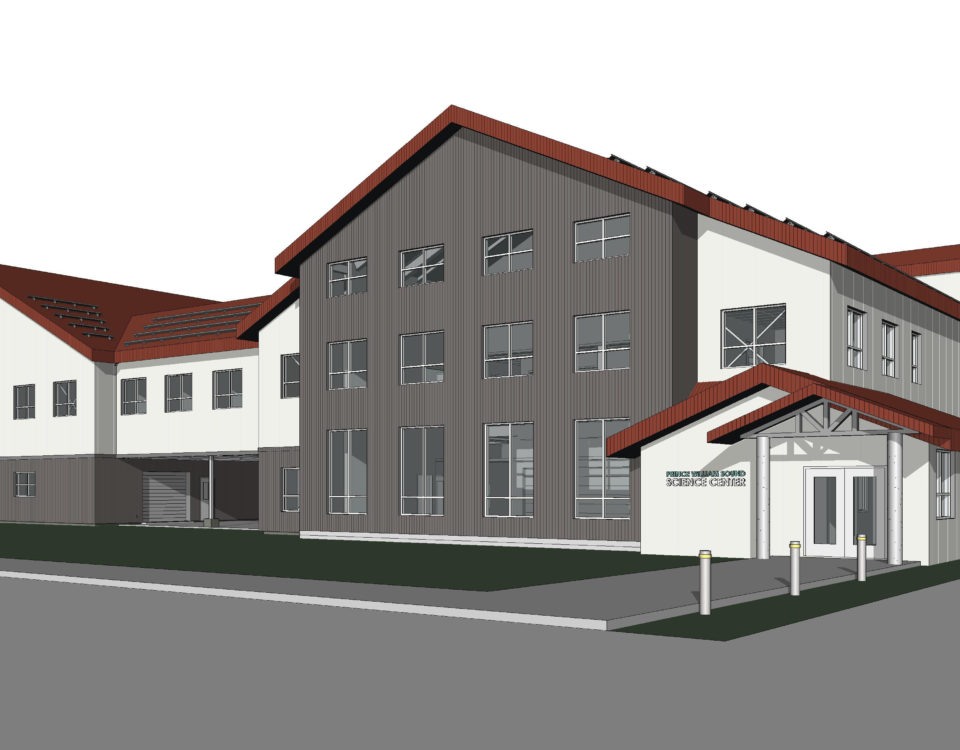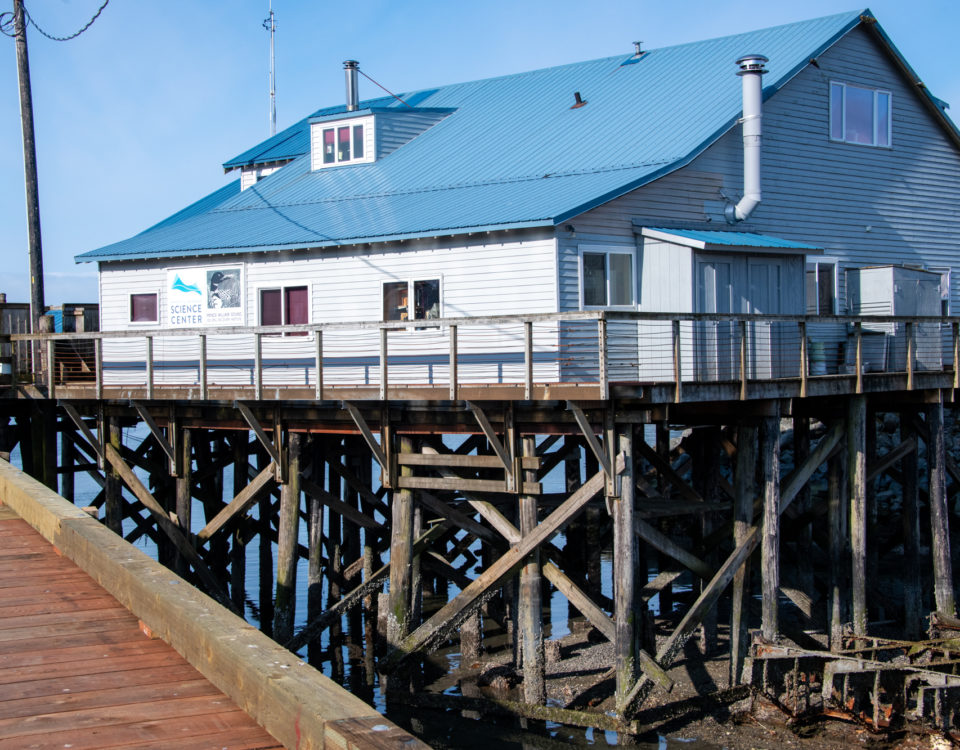Sockeye Energetics

Copper River Sockeye Salmon Project Motivated by its Potential to Inform Management in the Face of a Changing Climate
By Teal Barmore, October 17, 2019
During the summer of 2015, the commercial fishing community in Cordova, Alaska was abuzz with rumors about why the fisherman were not catching fish, even though the escapement monitored by the Alaska Department of Fish and Game (ADF&G) was showing plenty of sockeye returning to the river system. Because of unusually warm waters, some people suspected that fish were moving deeper to colder water and going under their nets. Ecological researcher Dr. Kristen Gorman discussed this with one fisherman, but he disagreed. According to him, the fish weren’t going under the nets, they were going through them. The fish were coming back small, and those fishermen who weren’t catching, were using the wrong gear size.
Kristen was intrigued by this new idea and got together with her colleague Dr. Pete Rand to look at the body size and condition data that ADF&G collects on captured fish. It confirmed that fish were coming back in smaller sizes that year and that the small fish also had poorer body condition (low weight for a given length). “This got us thinking that there may be a problem with these fish having enough energy to get to the spawning grounds,” said Pete. Some of the spawning populations of the Copper River travel over 300 kilometers in glacial waters, an energy intensive journey. Were these smaller, skinnier fish that seemed to be associated with a warming ocean equipped for these long-distance migrations? What factors were influencing their successful migration to the upper river?
The project that resulted from these questions was funded by the North Pacific Research Board and Alaska INBRE; data collection began over the summer of 2019. Kristen and Pete combined old standards with new technologies for a broad look at the overall condition of the fish to compare to their migratory success. In addition to standard measurements for energy content, e.g. weight for a given length, Kristen and Pete are using a ‘fat meter’ — a microwave sensor that you can run along the side of the fish to determine fat content. They are also collecting and analyzing samples from the gills, which will enable them to identify what types of pathogens the salmon are carrying with them. Some literature suggests that some of the pathogens that are typically associated with disease are magnified when warm water conditions are occurring or if fish are otherwise stressed. They are going to do molecular genetic work on the fish too, looking at the RNA of genes. When genes are turned on, they produce RNA which helps translate that gene into doing something in an organism. All of this information will be compared to the results of radio telemetry work.

One of 200 Copper River Sockeye that researchers analyzed and radio tagged in 2019. The hole in the gill plate is to help harvesters recognize a radio-tagged fish and the antenna extending from the mouth sends a signal to ground or aerial receivers as the fish migrates to the spawning ground.

Researchers are collaborating with the Native Village of Eyak and the ADF&G Sportfish Division, who are doing a similar project on Chinook Salmon, to track tagged fish in the river. Photos by Pete Rand.
During their first field season, 200 fish were equipped with radio tags and monitored as they moved upriver on their migration. As it turns out, it was an unusual year for salmon on the Copper River. Record high temperatures led to flood conditions and 85% of the fish Pete and Kristen tagged did not make it past the tagging site. Future results from gill tissue samples and the fat meter will provide insight into the fate of those unsuccessful fish. Of the few that made it further upriver, only a handful of the fish were detected on the spawning grounds. Given that this is the first year for the project we don’t have much to compare that to, but the numbers do seem concerning. Of the fish that did make it to spawning grounds, the longest tracked fish went over 200 kilometers to Tanada Lake in Wrangell–St. Elias National Park and Preserve. That particular fish was noted for its high fat content, supporting Kristen and Pete’s hypothesis of energy content relating to migration success.
For both Kristen and Pete, the really exciting part about this project is in its potential for the results to inform the management of an incredibly important resource in this region. The Copper River salmon fishery is managed by ADF&G. Each year, their staff count the number of salmon that enter the river to ensure there are enough spawners to sustain the run into the future. But this new study focuses on the quality of the fish returning. As Kristen points out, not all fish returning are created equal, and some will surely be unsuccessful in their journey to the spawning grounds. Understanding what might be causing mortality of fish while en route to the spawning grounds is one of the key issues their study is addressing. Conditions in the ocean are clearly changing, and there are consequences that can extend all the way to the headwaters of the Copper River. Results from this project have the potential to start a much needed conversation on how the ocean and river is changing and how salmon management needs to adapt in a changing climate.




